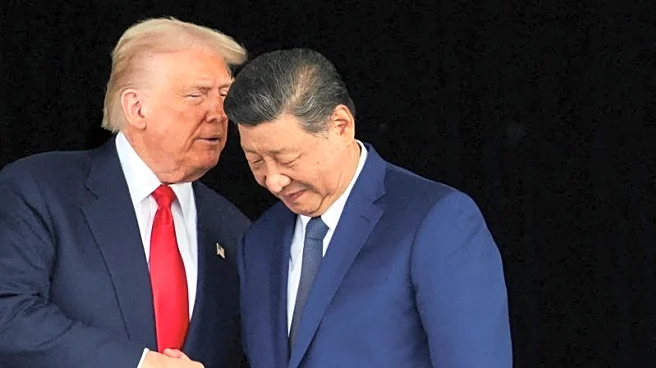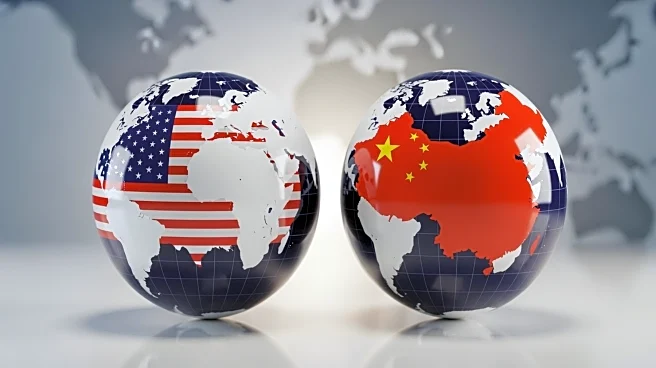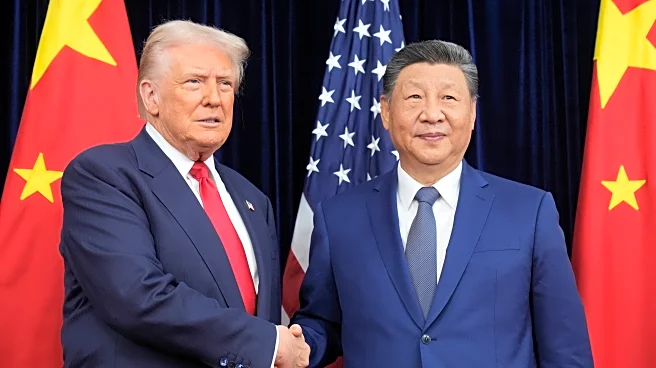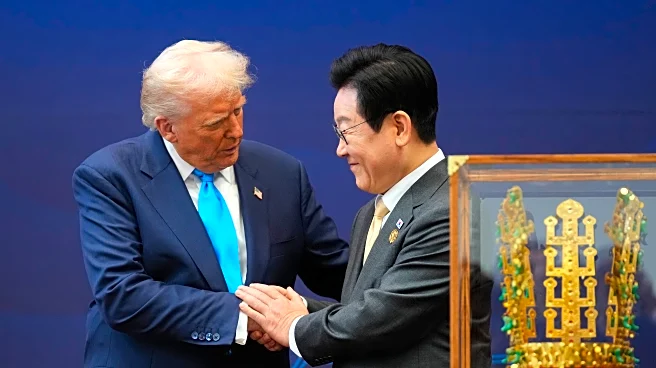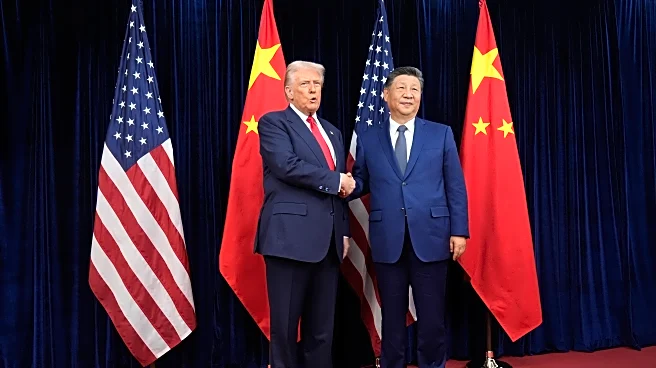What's Happening?
Soybean prices surged following the announcement of a potential trade deal framework between the U.S. and China. The agreement, reached after intensive negotiations, is expected to be finalized by President Trump and Chinese leader Xi Jinping during their
upcoming meeting in South Korea. The deal aims to avert the imposition of 100% tariffs on Chinese goods and includes China's commitment to delay its export-control regime on rare-earth minerals and resume large-scale purchases of U.S. farm commodities. This development has led to significant gains in soybean futures, with January soybeans closing up 24¾¢ at $10.85 per bushel. Other grains, such as corn and wheat, also saw price increases, although gains were limited by trade disputes with Colombia.
Why It's Important?
The potential trade deal between the U.S. and China is significant for American agriculture, particularly soybean farmers, who stand to benefit from renewed Chinese purchases. This agreement could stabilize the agricultural market, which has been volatile due to trade tensions. The deal also impacts broader economic relations between the two countries, potentially easing tensions and fostering cooperation. However, the ongoing dispute with Colombia highlights the complexities of international trade and its impact on U.S. commodities. The market's positive response reflects optimism about future trade relations and economic stability.
What's Next?
The next steps involve the formalization of the trade deal during the meeting between President Trump and Xi Jinping. Stakeholders in the agricultural sector will be closely monitoring the outcomes, as the deal's finalization could lead to increased demand for U.S. soybeans and other commodities. Additionally, the reopening of the U.S.-Mexico border for trade could further influence market dynamics, particularly in the cattle futures market, which has experienced significant losses.
Beyond the Headlines
The trade deal's implications extend beyond immediate market reactions, potentially influencing long-term U.S.-China relations and global trade policies. The agreement may set a precedent for future negotiations, impacting how countries approach trade disputes and tariffs. The focus on rare-earth minerals also highlights the strategic importance of these resources in global trade and technology sectors.






